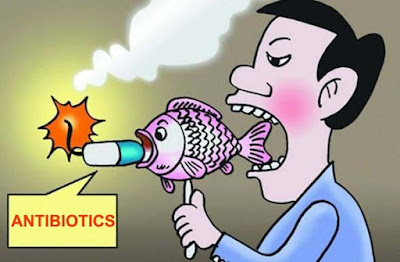At present, aquaculture relies heavily on the use of antibiotics, however, the residues of antibiotics in farmed products and the natural environment have caused serious microbial resistance problems worldwide, including China, the European Union, the United States and the United Kingdom. And the Community has successively introduced policies to reduce or even ban the use of antibiotics in feed. Therefore, there is an urgent need to develop new antibacterial, biosafe, environmentally friendly and biodegradable new antibacterial agents for aquaculture that can replace antibiotics.
Recently, the research group of Professor Liu Runhui from East China University of Science and Technology has made a breakthrough in the research on the replacement of antibiotics for aquaculture, and discovered a biodegradable polypeptide polymer, which has high-efficiency broad-spectrum antibacterial activity and good biocompatibility. The preferred polypeptide polymers not only exhibited significant therapeutic effects in the zebrafish in vivo infection model, but also showed no bacterial resistance to continuous use. At the same time, the antibacterial polypeptide polymers found in this study can be degraded into single amino acids and dipeptides that completely lose antibacterial activity under the action of enzymes, which effectively avoids the problem of antibacterial resistance caused by antibiotic residues in the environment. Perfect unification of high antimicrobial activity, biosafety and environmental friendliness for antimicrobial agents.
Based on the NCA rapid ring-opening polymerization method established by Professor Liu Runhui's research group in the early stage, this study synthesized polypeptide polymers composed of different proportions of lysine and serine, and selected the most common ones in aquaculture through high-throughput screening methods. Antibacterial polypeptide polymers with broad-spectrum antibacterial activity against pathogenic bacteria while maintaining low hemolytic activity and low cytotoxicity.
Compared with commonly used antibiotics, polypeptide polymers show faster bactericidal speed, and long-term use will not induce bacterial resistance and cross-resistance. Compared with most non-degradable antibiotics or other antibacterial agents that still retain antibacterial activity after degradation, the enzymatic degradation products of biodegradable polypeptide polymers completely lose antibacterial activity, which can effectively reduce the residues of antibacterial substances in the environment and the corresponding selection. Sexual antibacterial stress.
The study also established a zebrafish infection model to further study the in vivo antibacterial activity of the polypeptide polymers. After intraperitoneal injection of the preferred polypeptide polymer, the survival rate of zebrafish infected with Vibrio eel could be increased to 88%, and the bacterial load in the liver, spleen and kidney was significantly reduced, and there was no evidence of Vibrio eel infection. Bleeding symptoms. In addition, intraperitoneal injection of the preferred polypeptide polymer did not cause abnormal serum biochemical indexes in zebrafish, showing good in vivo safety. This study shows that the preferred biodegradable polypeptide polymer is expected to be used as a substitute for antibiotics in aquaculture, and can be extended to other antibiotics in aquaculture, with potentially important application value.
With the rapid development of the world's population and economy, the breeding industry has also entered a stage of modernization, intensification and large-scale development. In order to meet the production needs of high quality and high yield, antibiotics are widely used in aquaculture. In 2013, the global consumption of antimicrobials (mainly antibiotics) in the aquaculture industry was approximately 131,000 tons and is expected to exceed 200,000 tons by 2030. The massive use of antibiotics has caused serious drug resistance problems worldwide. On the one hand, residual antibiotics in farmed animals will be passed to humans through the food chain, further destroying the microbiota in humans and inducing bacteria to develop drug resistance. On the other hand, most of the antibiotics used in aquaculture, especially aquaculture, will remain in the environment. At present, antibiotics that are not easily degradable, such as sulfonamide, have been detected in surface waters of various countries with high concentrations of residues, which has caused huge selective antibacterial pressure on the environment.
Faced with the severe challenge of microbial resistance, many countries have successively introduced policies to reduce or even ban the use of antibiotics in feed. Document No. 194 of the Ministry of Agriculture and Rural Affairs of China also announced that China will usher in a comprehensive ban on the feed side from 2020. The age of antibiotics. Therefore, research on the replacement of antibiotics in aquaculture is imminent.





No comments:
Post a Comment